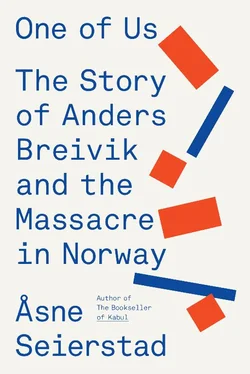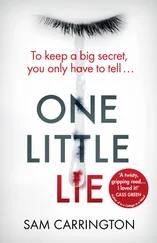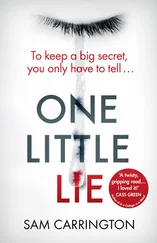At the very end, the home visitor did say there could be grounds for concern about how the mother might cope with potential crises in the future, but this in itself was not considered sufficient to warrant removing the boy from his mother’s care.
Around midsummer 1984, when Anders was five, the child welfare board in Oslo reached its unanimous verdict:
‘The necessary conditions for taking the child into care have not been met. Case dismissed.’
What a little brat, thought a young mother from one of the neighbouring staircases, who had tried yet again to get a hello out of Anders. He never responded, just looked away or turned aside.
Oh well, she thought, and went on her way.
Anyone watching the children at play would notice the boy who was nearly always by himself. He would observe from the sidelines, never get involved in anything. But the busy parents had enough to do keeping track of their own kids. The gardens and pathways round the blocks of flats at Silkestrå were teeming with children.
Then, something new happened on the estate. A number of the unsold flats were bought up by Oslo City Council and allocated to refugee families. Asylum seekers from Iran, Eritrea, Chile and Somalia moved into the flats round the blue, green and red gardens, and gradually the scent of garlic, turmeric, allspice and saffron drifted out through open balcony doors.
Until the early 1980s, Oslo’s Skøyen was a district of dazzling whiteness. Few foreigners found their way to Norway. At the start of the preceding decade, Norway had fewer than a thousand non-Western immigrants: 1971 saw the first influx of foreign workers as the Norwegian state tackled a labour shortage by issuing an invitation to Pakistan. Six hundred single men came over to work that year, taking jobs that most Norwegians did not want. But the foreign workers did not move into Skøyen. They lived in cramped and miserable conditions in run-down parts of the city.
In 1980, the first asylum seekers arrived. Refugees presented themselves at Norway’s borders, asking for protection. This had never happened before. In 1983, the first year the Breivik family lived at Silkestrå, 150 asylum seekers came to Norway. The year after that, three hundred. Three years later, the number was almost nine thousand.
A Chilean family moved in on the floor below the Breiviks. They had fled Augusto Pinochet’s persecution, and after almost a year at the asylum seeker reception centre in Oslo they were given a flat at Silkestrå. Wenche was the first person to turn up on their doorstep, with a warm ‘Welcome’ and a child in each hand.
Anders took a liking to the youngest daughter of the family, a little tot with curly hair, two years younger than he was.
Eva gradually started to tag along with the boy from the second floor wherever he went. For his part, he thawed out with the new girl, grew more talkative and taught her new Norwegian words every day. With the Latin American family, he felt secure.
Eva got a place at his nursery in Vigeland Park, and when Anders moved on while she still had two years left at nursery he waited for her every afternoon after school.
Smestad was a school for conditioned children who had fathers with freshly ironed shirts, posh middle names and villas with big gardens. King Harald went to school there after the war, and was later followed by his own children, Prince Haakon Magnus and Princess Märtha Louise. The Prince was six years older than Anders and finished his last year at primary just as Anders was starting.
This school district is a dark blue belt in Oslo and it helped deliver the right wing’s election victory in 1981. A wave of privatisations and deregulation of property prices followed. The value of housing-cooperative flats soon soared.
In the spring of 1986, the year Anders Breivik started school, the Labour Party returned to power. The Conservative Prime Minister Kåre Willoch had faced a vote of confidence after proposing to raise petrol prices and failed to win the support of the right-wing Progress Party.
Suddenly, Gro Harlem Brundtland was Prime Minister again. This time she was better prepared. She became the first head of government in the world to form a Cabinet with as many female ministers as male ones: eight out of seventeen Cabinet posts, plus herself at the top.
This was a new Labour Party, which tapped into the spirit of the age and carried forward many of the economic changes brought in by Kåre Willoch’s Conservative government.
At the same time, Brundtland’s policies gave women a set of rights that no other country could match. Pragmatic as she was, Gro set out to make life more practical for women, and for men. Her government extended maternity leave, built nurseries and gave more rights to single parents, and there was a focus on improving children’s and women’s health. In the wake of these reforms came a stream of new, confident women who wanted to play their part in society.
Not everyone was happy. State feminism was the insult hurled by some. A matriarchy, complained others. The term ‘vagina state’ was later coined. But it was still Gro Harlem Brundtland who put her stamp on Norway more than any other politician in Anders’s school years.
Anders himself was growing up in a female world consisting of his mother, his sister and Eva. It was fun playing with Anders, Eva thought, at least for a while. Because Anders was always the one who decided on the game. It was only when they were at her flat that she had a say. They built a den in the living room, played with her dolls or just hung around in the kitchen with her parents. When they were upstairs at Anders’s place they never played where his mother was. Round there, they were never allowed to stay in the living room, which was always kept pristine, nor in the kitchen. They were only allowed to be in his room and they had to keep the door closed. That was where Anders had his toys and games, all arranged in neat rows on the shelves. Wenche really preferred them to play outside. Because Anders’s mother liked peace and quiet.
Whenever Eva tried to play with other children Anders pulled her away; he wanted to keep her to himself. He liked it best when there were just the two of them.
But sometimes the group took over. There were so many youngsters at Silkestrå it was difficult to keep the others at bay. In the basement there was a room where some parent had installed a table-tennis table. The children would take their cassette players down there and dance to Michael Jackson, Prince and Madonna, and later to rap music. Anders found his own spot. He always sat on the ventilation pipes in the corner and did not join in the dancing or the table tennis. From there he could see everything, and was left in peace. There was a smell of urine in that corner. Whenever the smell spread through the basement, Anders got the blame. ‘It stinks of pee, it must be Anders!’ the others laughed.
* * *
The ants in the wall had a permanent path from the grass, across the tarmac, along the edge of the footpath, across a grating and up the steps. Anders would sit there waiting.
‘You’re going to die!’
‘Got you!’
He picked them up one by one and squashed them. Sometimes with his thumb, sometimes his index finger. ‘You and you and you and you!’ he decided, there on the steps, master of life and death.
The little girls found him disgusting. He was so intense, and he was cruel to animals. For a while he had some rats in a cage and would poke them with pens and pencils. Eva said she thought he was hurting them, but he took no notice. Anders caught bumblebees, dropped them in water and then brought them up to the surface in a sieve so he could watch them drown. Pet owners at Silkestrå made it clear to their children that Anders was not to come anywhere near their cats or dogs. Anders was often the only one not invited to come and stroke other children’s new puppies or kittens.
Читать дальше












